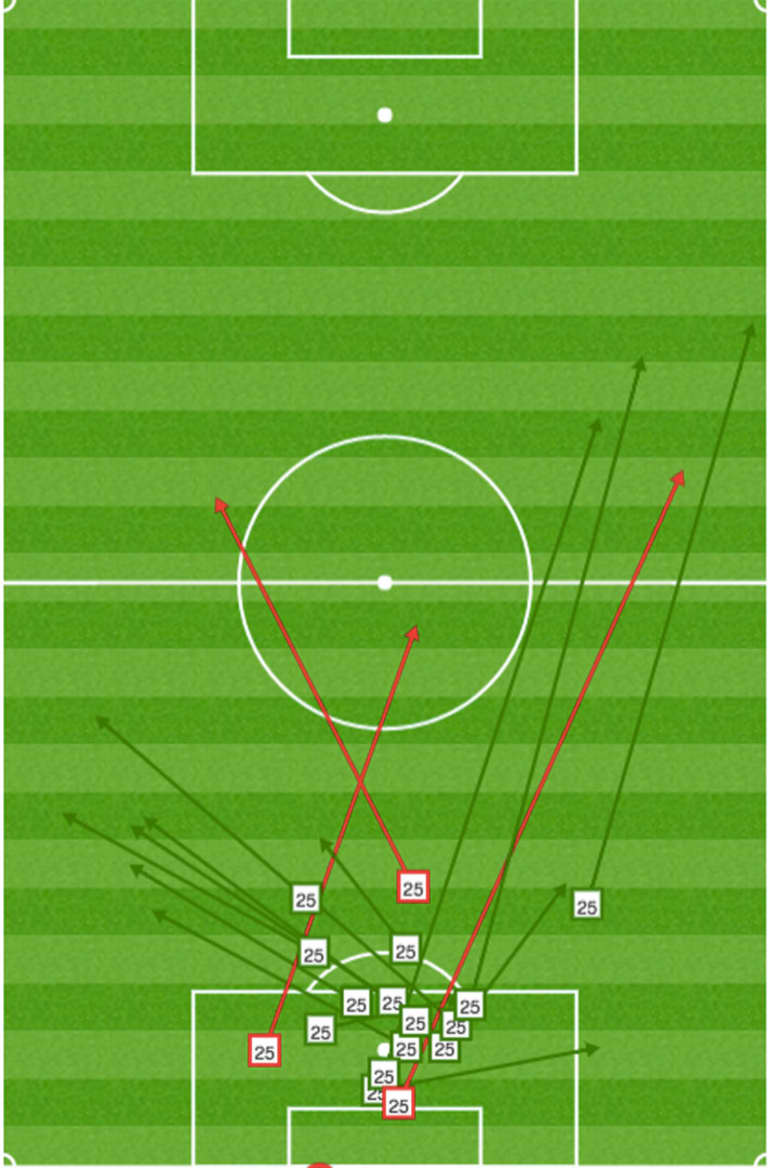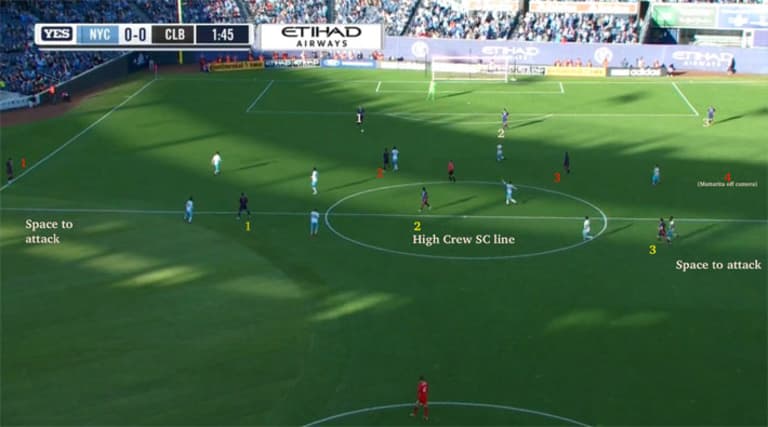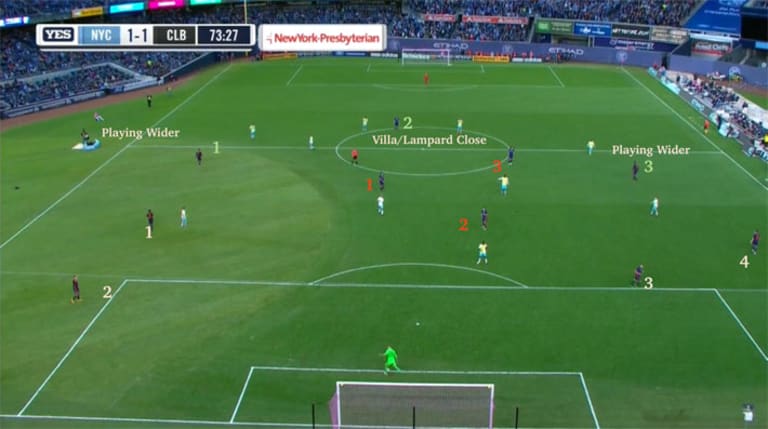Despite soccer being professional for over 100 years, there does not appear to be a definitive "best" style to guarantee results. For example, Barcelona’s two Champions League victories under Pep Guardiola in 2009 and 2011 sandwiched Inter Milan’s historic season under Jose Mourinho in 2010. Stylistically, those two teams were on opposite ends of the spectrum in their approach to possession, as we saw in the dramatic 2010 Champions League Semifinal.
Guardiola’s brand of positional play has won trophies, but also leaves his team open to criticism when it goes wrong. Closer to home, we have seen what can happen when mistakes are made by a team trying to build up with short, purposeful passes from the backline and goalkeeper, a key component of positional play. So, why would a coach choose to have his team play in this manner?
A team’s style and tactics cannot be separated from its players. Coaches must try and get the most out of their assets, while protecting or hiding their weaknesses. At the highest level, we have just seen Manchester City wave goodbye to a goalkeeper that started on two league-title winning teams because the coach feels his qualities aren’t the best fit for a positional style.
Another member of the City Football Group is also capable of playing out of the back. In nine of their 15 regular season wins, New York City FC have had more than 53 percent possession of the ball. While Patrick Vieira does not have quite the same luxury as Guardiola to acquire almost any player he wants, he is able to call on three extremely accomplished Designated Players in David Villa, Andrea Pirlo and Frank Lampard.
With all three coming towards the end of their careers, playing the ball out of the back enables them to spend more time on the ball, and less time defending. Villa has scored more goals than anyone in MLS not named Bradley Wright-Phillips since joining the league, and while he is certainly the focal point of the City attack, they are not playing long passes to him as a traditional target forward. A closer look at last week’s 4-1 win against Columbus Crew SC can help us learn more.
While City ended up with less than 50 percent of the possession, 'keeper Eirik Johansen’s passing map shows a willingness to play the ball short:

Vieira started in what could be called a 3-4-3 formation, with Lampard on the bench and Andoni Iraola as part of a back three. They tried to play short, but the players had a hard time advancing the ball past midfield, partially thanks to the cozy dimensions of Yankee Stadium, and partially thanks to an aggressive Crew SC defensive line.
Early on, we can see NYCFC dropping all their players almost in their own half for a short buildup and Columbus following by pushing high and condensing the space:
(white numbers = defenders; red numbers = midfielders; yellow numbers = forwards)

As a result, even though NYCFC wanted to build out of the back, their efforts were sometimes frustrated.
Crucially, there were wide spaces that could be attacked. Unfortunately for City, they stalled for most of the first half as their forwards stayed narrow and their wing backs could not push high enough as they were needed to provide the width as City built from the back.
That video is the last part of an almost 40-second sequence of NYCFC simply passing the ball along their backline waiting for an opening. We can see Iraola recognize that Columbus is pushed up very high and City will need to try and attack the space behind the Columbus backline. He appears to signal to the City forwards that this needs to be done.
Vieira was wearing a microphone for the game and was caught at halftime of the broadcast saying that NYCFC was playing through the middle too much and needed to go out wide. Their first goal is an example of them attacking the spaces left by Columbus’ decision to push up, with a fantastic RJ Allen ball setting David Villa free in the space he loves to operate in, on the left side of the field. Villa created the goal, but it was the only shot on target that City had for the duration of the first half.
With the game tied in the second half, Vieira introduced Lampard for Pirlo. This also changed the system to a 4-3-3, with Iraola pushing up from a position in the center of defense to the No. 6 position at the bottom of midfield. Iraola made this role his own since the 7-0 derby loss to the New York Red Bulls in May. He started 20 times after the Derby loss and City took 1.9 points per game in those 20 games. The Columbus game was the only time post-Derby that Iraola did not start as a central midfielder.
In this game, the switch allowed the two wide attackers to hold wider positions and for Lampard to play closer to Villa:
(white numbers = defenders; red numbers = midfielders; yellow numbers = forwards)

Shortly thereafter City scored their second and third goals. City’s third goal was a four-pass sequence that started with Frederic Brillant regaining the ball inside his own six and choosing to play a composed pass to Lampard at the edge of the box, where he combines with Iraola leading to a comfortable Khiry Shelton finish a little over 10 seconds later.
While it was certainly a counterattack goal, City’s principles of building with short, purposeful passes, and giving their best players time on the ball were on display.
The Columbus game shows that Vieira has New York City FC building out of the back, but also suggests pragmatism over fanaticism. To get the best out of Villa, Lampard and Pirlo, City need to be in control of the ball. While those three (and Iraola) are not going to outrun many in the Audi 2016 MLS Cup Playoffs, they can certainly outplay them.
Vieira has shown his willingness to shake things up by moving Iraola centrally after the derby and has also displayed his ability to read the game by changing the system against Columbus. While Pirlo and Lampard haven’t started together since September 17, Lampard’s potential return allows them both to play in a 4-3-3 with Iraola at the base. They will want to control the play and put Villa, Lampard and Co. into positions to finish by building out of the back.
They will see if they can accomplish that goal starting on Sunday when they face off in the Eastern Conference Semifinal first leg against Toronto FC (7 pm ET; FS1 in US | TSN1,4 in Canada).
Matt Pavlich is a youth soccer coach in the New York City area who holds a NSCAA Advanced National badge. He is currently working with Asphalt Green Soccer Club on the girls side, and Martin Luther King high school on the boys side. He has worked for Opta since 2011, primarily focusing on MLS. He also played varsity soccer for Vassar College.













